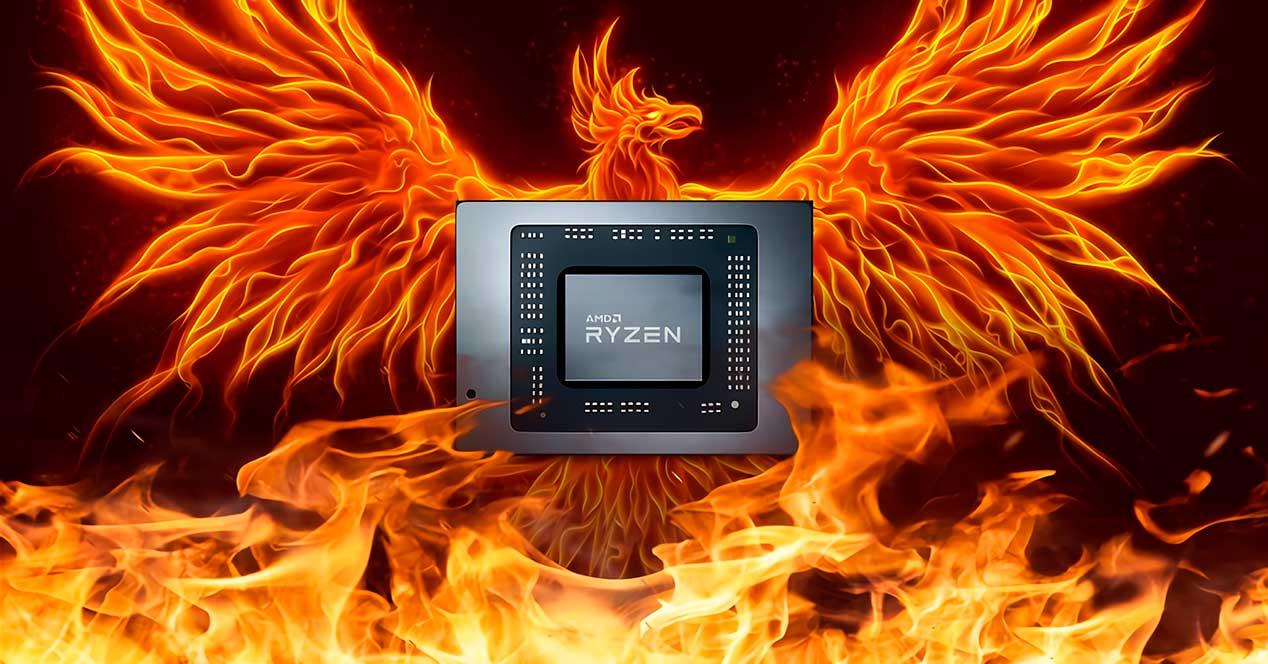Not even seven days since AMD’s leaked plans lasted without another new leak in between. And that is that what we saw was just the prelude to what is to come and as was pointed out there on the slide, key elements were missing. Well, the first of them has to do with the Phoenix microarchitecturewho will have a RDNA 3 graphics card that will rival current NVIDIA laptop graphics cards like the RTX-3060M.
The device was light enough, but it left in the inkwell important data such as we know today, and which are essential as they will determine the future of AMD’s line of lightweight laptops and from Intel. Giving a quick overview, what we’ve seen is that AMD is cooking up a double whammy through two different depth gaming laptop lines in order to match its rival: Dragon range
The shot of the AMD Ryzen 7000 with Phoenix and its iGPU
Count on what has been seen (architecture Zen 4, LPDDR5, PCIe 5.0 and TDP between 35 to 45 watts) in theory we would be talking about the Ryzen 7000 HS or maybe just the 7000H. Knowing that the Phoenix microarchitecture will be the one with the least powerful iGPU (at least in theory) it is quite surprising to find such low figures in terms of watts, especially when you see the leak revealed:
Yes, the iGPU of these “low power” Ryzen processors will have power equivalent to what we currently see with a NVIDIA RTX-3060M laptop in Max-Q version and 60 watts of consumption. In other words. AMD is ditching the RDNA 2 architecture (you can’t understand it otherwise) and going straight to RDNA 3 to beat Intel and its new Xe LPs.
Phoenix≈3060m 60W GPU
— Greymon55 (@greymon55) May 8, 2022
But there is more, because the number of leaked units could be wrong if we stick to this theory, since it seems that with RDNA 3 AMD should have gone straight to the point, whether for performance, power consumption or physical space on the chip.
How is an iGPU going to achieve this performance in an APU?
That’s the big question, the million bucks, mainly because in a generation we would see the performance of a dedicated chip as a GPU in an APU. Well, at the moment there is no confirmation or rumors about it, so we will start speculating. The first would be clear: an advantage in the key 5nm node to be able to take this step.
Secondly, it is the fact of having taken the step LPDRR5 or DDR5 (remember both options would be correct, at least on paper) while the third would come from the perspective of a Infinite cache which could be integrated into the die itself or as an independent chiplet and in the best case it would be an extension of the I/O matrix (unlikely as such).
Previously, RedGamingTech leaked Phoenix as 16-24CU, but as RDNA3 architecture they should be 8-12CU.
— Greymon55 (@greymon55) May 9, 2022
In any case, if this were confirmed, we would be talking about an incredible leap in performance, since comparatively speaking, we would have the performance of an APU for laptops. RTX 2060 desktop computerpossibly including the support and ability to work with Laser trace. Not only would this be a blow to Intel, but it would make things very difficult for the blue team in this line of laptops. Anyway, AMD Phoenix seems to have an excellent iGPU, the question is how far it could really go.








